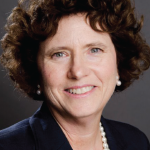As a fellow in training, Howard Yang, MD, RhMSUS, became frustrated with certain policy issues he viewed as obstacles to providing timely, optimal care for patients. Rather than simply grumbling about it, he accepted an ACR invitation to channel those feelings into action and became an advocate for rheumatology. It was such an eye-opening and rewarding experience that Dr. Yang, now a practicing rheumatologist at UCLA Health’s Santa Monica and Ronald Reagan Medical Centers, encourages other up-and-coming professionals to think about how they can get involved and make a real difference in the field.

Dr. Howard Yang
Dr. Yang recently took some time from his busy schedule to discuss his advocacy efforts—and why such work is critical—with The Rheumatologist.
The Rheumatologist (TR): Why did you decide to get involved with advocacy?
Dr. Yang: While I was still a fellow in training, I started to see things that needed changing. For example, I wanted to use certain medications, but the insurance [company] would reject [my prescriptions], and I couldn’t understand why. I was told that’s just the way it is, but I thought, ‘This is not right.’ And then I got an email from the ACR asking if I would be interested in advocacy. I did not even know what advocacy was at that point, but I replied, ‘Sure. I want to learn.’
TR: What happened next?
Dr. Yang: The ACR brought me to Washington, D.C., and I got to speak to rheumatologists and other fellows in training, as well as patients, nurses, physical therapists and pharmacists. It was quite a humbling experience learning the lingo and how our government works. I mean, we’ve all seen the cartoon about how a bill turns into a law, but this showed me what all goes into that and what happens afterward, and it introduced me to the Centers for Medicare & Medicaid Services and the U.S. Department of Health & Human Services and their roles.
Once I was fortunate enough to join the ACR’s Government Affairs Committee (GAC), I learned that advocacy is about looking at a larger issue and finding those specific parts that are the problem, such as the amount of time rheumatologists have to spend filling out insurance paperwork or calling for prior authorization. Once you identify those parts, we can then figure out how to change them.
TR: How are you helping effect change as an advocate?


